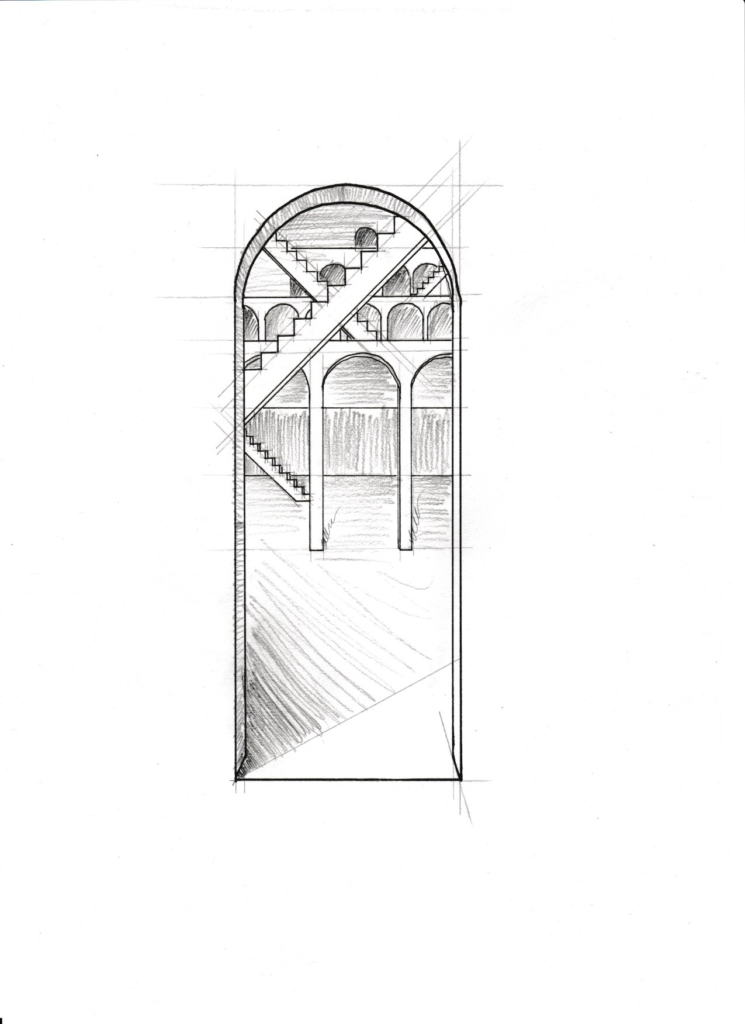I’ve always been incredibly inspired by optical illusions. One of my favourite films growing up was Labyrinth. I loved all of Henson’s greasy little puppets, Bowie’s star turn and the idea of the labrynth itself with its impossible architecture, illusions, bluffs and tricks.
I think that film was my introduction to Escher and the idea of Trompe-l’œil, though I didn’t know the French term at the time. Escher’s work has been fundamental in the development of my own style and practice, and still is. He played fast and loose with gravity, orientation and reality – and the work featured in Labrynth – Relativity – was fundamental in the theory behind the three dimensions in the Constant State. Certainly, I’ve been almost constantly concerned with perspective drawing ever since.
Trompe-l’œil and perspective go hand-in-hand. It’s certainly something the Delavals would have been familiar with, as it’s a technique which has been employed in theatre and performing arts for as long as anyone can remember.
While wandering around Seaton Delaval Hall one thing I keep coming back to is the idea of portals. The hall itself is one big portal to the past, or many different versions of it. As you walk through the hall, Vanbrugh’s sense of Drama and theatre is abundant; moving from floor to floor, wing to wing – you pass through arched portals into spaces filled with awe. Then, there are the many closed doors and blank decorative arches, almost too many to count.
I’m deeply curious about a closed door. As I strolled around Seaton Deleval Hall, I found myself thinking about what was behind a door, now and then – and in the many whens. What would be behind one of these mystery doors in Escher’s world of Realativity?
So I started to sketch some ideas of what these spaces, places or worlds might look like. What they might contain, and how to perhaps use Trompe-l’œil to trick an onlooker into thinking something magical or impossible lies just through a shadowy arch.
I love the idea of creating paintings to fill some of these arches or doorways, giving the viewer the impression of fantastical worlds which lie beyond. I especially like the idea of presenting these in doorways or arches where vast worlds are depicted beyond, but in reality, the opening is to a room or building far too small to contain them. Certainly something the Delavals would have been keen on I think.


I feel like of all the avenues I’ve been exploring, this is the closest to something which feels comfortable as working both working to the brief and existing as part of my ouvre; very me…

Leave a Reply